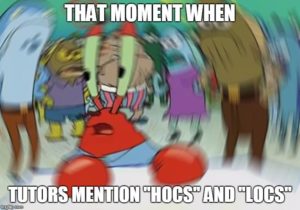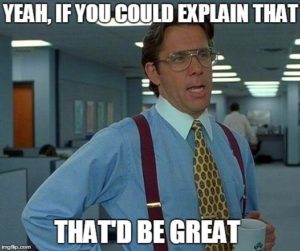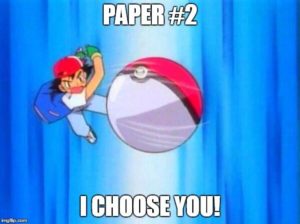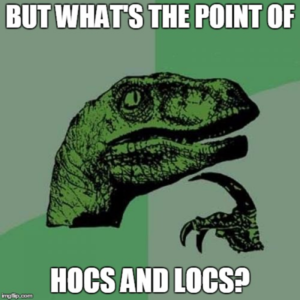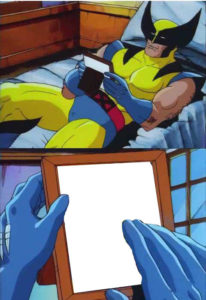As we get closer to the end of another term, when many of you are preparing to graduate and head out into the world of internships and jobs, it seems like an apt time for the Writing Resources Center to give you a little advice about how to write the perfect cover letter. Nearly every job or internship application requires one, but they can be a bit intimidating, especially since the cover letter is almost always the first time your prospective supervisor or employer encounters you and your personality. That said, you want to put your best foot forward, and I’m here to give you some tips on how to do that.
The purpose of a cover letter is simple: to show your prospective employer that you can communicate; to convey what you find to be interesting about the job you’re applying for; and to show how your experiences, education, and skills make you a good fit for the job. It must be clearly written so it’s easy to read, and it’s short so that hiring committees can quickly skim for necessary information as they read a lot of applications. It may seem daunting to know that you have to do all of this in less than a page, but there are certainly things you can do to set yourself up for success! Here are three useful tips for writing a stellar cover letter:
1) Only include relevant information
This one seems particularly difficult for a lot of first-time cover letter writers. For one, it’s easy to think that the cover letter is the perfect space to elaborate on the information we include in our resume; however, recreating your resume, even if you are elaborating on some of the more important points, is not going to get you noticed. Instead, you want to maximize your application space by including information that isn’t necessarily showcased on your resume. This will give prospective employers even more information about you, instead of several documents that essentially say the same thing.
For instance, you might have included on your resume that you volunteered for a water conservation nonprofit and listed the day-to-day tasks you completed. Don’t just mention it again in your cover letter, along with your other education and work experience. Instead, if you think it’s relevant, spend some time discussing exactly what skills you developed or knowledge you acquired during your time volunteering that are relevant to the job for which you are applying. In the case of this example, this may be anything from volunteer management skills to an awareness of water conservation methods; it just depends on the circumstances and the job opportunity.
2) Customize
Let’s face it: the job search is exhausting, and applying to several similar positions at a time–all of which may require a cover letter–may tempt you to save time and energy by submitting the same cover letter to multiple jobs.
You should never do this, though. It’s too impersonal, and may give the impression that you’re just mass-applying to jobs instead of looking for the perfect fit: one that will balance your skills and expertise with the company’s needs and goals.
Instead, do your research before you apply for the job. What is the company’s mission statement? What are their goals? What are the requirements of the position? Who is the head of the department? You don’t have to communicate that you know all of this information in your cover letter, but you can show that you’ve put in the time and effort to see if the company and the job are a good fit for you (and vice versa). All it takes sometimes is dropping the mission statement in your first paragraph, something like this:
My management skills, experience in marketing, and educational background make me the ideal candidate to help X-and-Y Company “put consumers first.”
Then, of course, you spend the next paragraph of your letter detailing just how you’re a great fit for the specific position, since now you know that you’re uniquely suited to help them meet their goals and further their mission. You can easily do this with the following tip:
3) Highlight your skills and knowledge, not just your education
Coming right out of your degree program (or even if you’re applying in the middle of the program and haven’t graduated yet) can make it really tempting to focus your cover letter on your education. After all, you’re in the thick of it, or just leaving the lengthy, hard work of earning a college degree behind, so it’s on your mind. Think about this, though: it’s graduation season, and you’re graduating with a few hundred others who just earned the same degree. Focusing on your education, the degree you earned, doesn’t necessarily set you apart from the other applicants who also have their degree in Business Management.
What you do instead is focus on the unique aspects of your education, the parts that helped you develop specific skills and knowledge (you know, that stuff that makes you uniquely suited to this one particular job you’re applying for). Were you a member of any honors societies that allowed you to develop leadership skills? Did you work a relevant internship during your junior year? Did you take a class that changed the way you thought about catering to target markets? Did you volunteer in a relevant capacity?
You should also spend some time discussing your skills, even if they aren’t necessarily related to your education–especially if your skills are perfectly matched to the job description. Are you a natural leader? Do you work well with a team? Do you learn new technologies easily? Are you an excellent written and oral communicator? Are you self-motivated? Do you like to tackle new challenges?
That’s about all we have space for today, but of course, if you’re writing a cover letter and you want a second opinion, please be sure to visit the Writing Resources Center or the Career Center (career.uncc.edu) here at UNC Charlotte! The WRC works in tandem with the Career Center to help you ensure that you’re putting your best foot forward as you send out those job applications. Good luck!
Sources:
http://career.uncc.edu/sites/career.uncc.edu/files/media/cover-letter-guide.pdf
https://www.themuse.com/advice/how-to-write-a-cover-letter-31-tips-you-need-to-know









